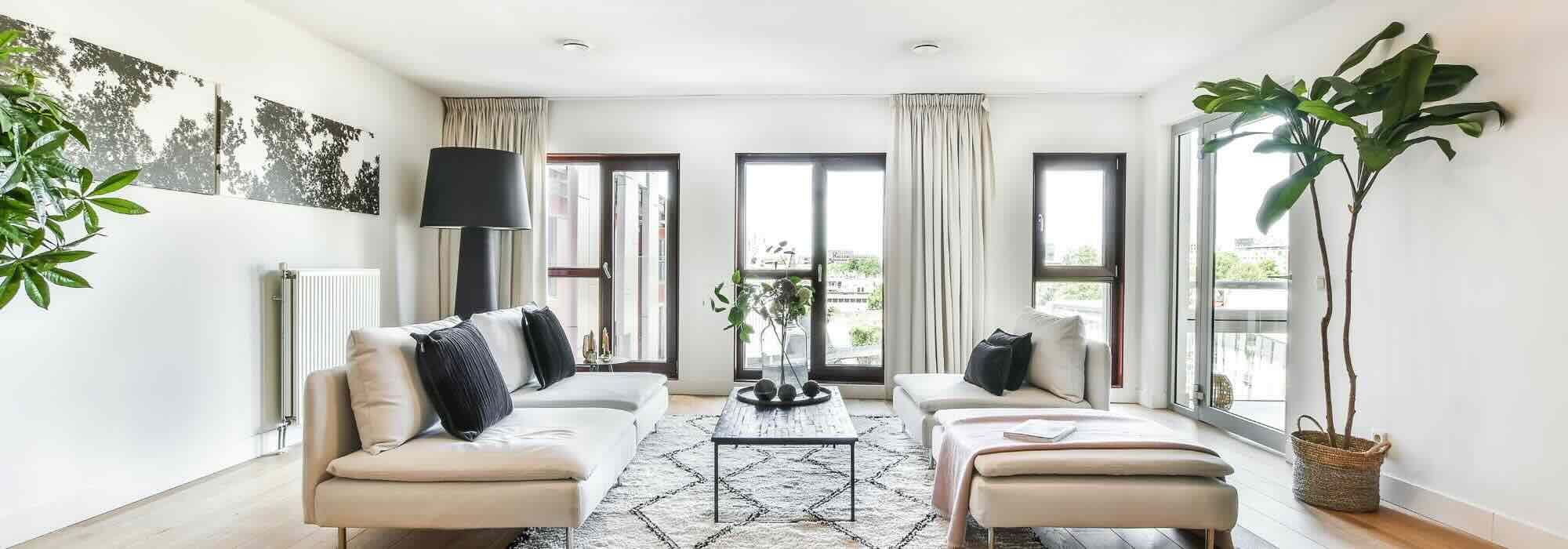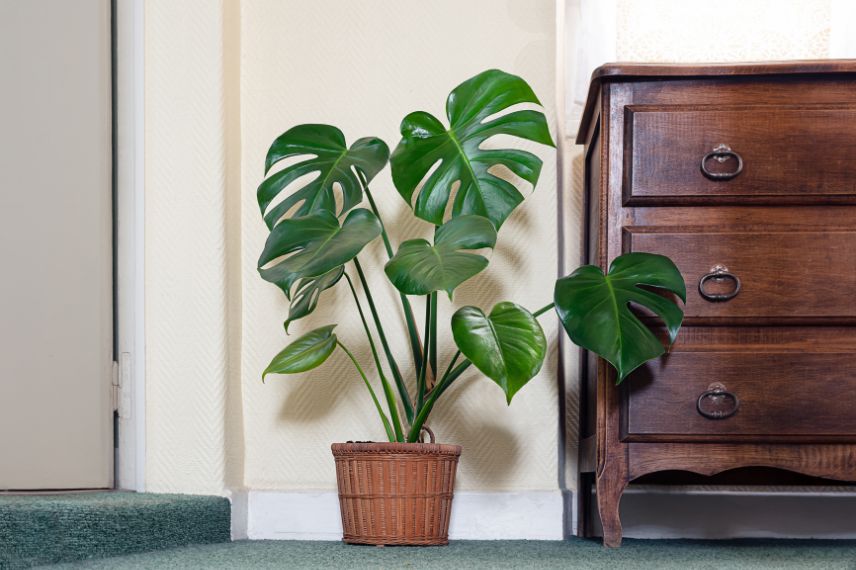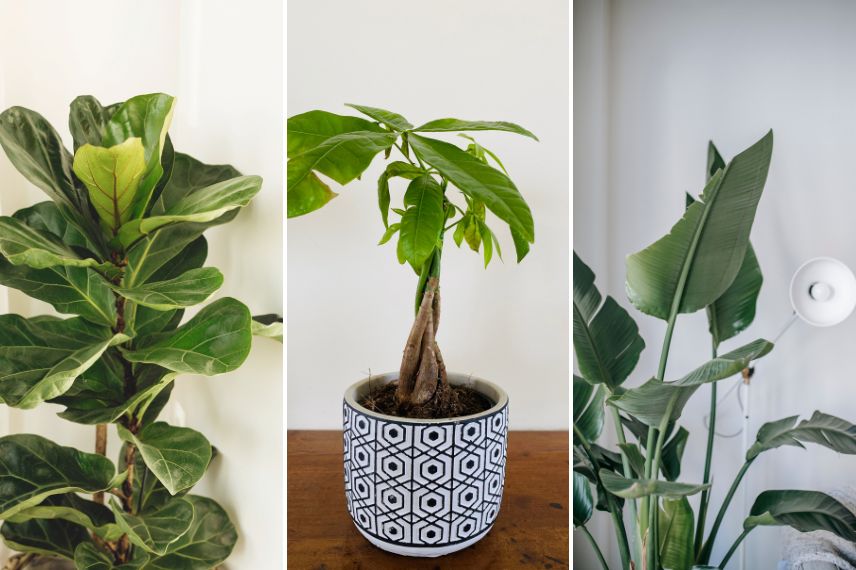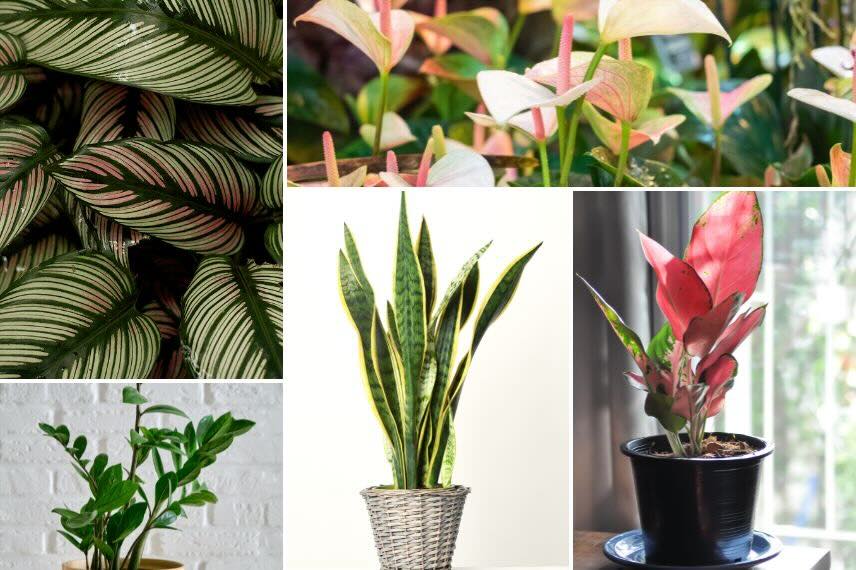
The best houseplants to brighten up a living room
Regardless of the space or light
Contents
Creating a living room with houseplants is much more than just a decorative touch. It’s a way to create a lively, soothing and welcoming atmosphere, while improving daily wellbeing. The key is to choose plants suited to the room’s light exposure, humidity levels and space constraints. Whether the living room is bathed in light or rather dim, spacious or more compact, there are plants that can thrive perfectly in it.
In this article, discover a selection of aesthetic and easy-care houseplants, along with practical advice on how to choose them wisely and care for them long-term.
Key criteria for choosing an indoor plant suited to the living room
Before selecting a houseplant for your living room, it’s important to consider a few fundamental factors. Each plant has its own needs, and while the living room may be welcoming, it doesn’t necessarily suit all species. Here are the key criteria to consider for an informed choice.
Available light
Light is the first factor to assess. Some plants thrive in bright light, while others prefer filtered light.
- In a bright living room with large south- or west-facing windows, you can accommodate light-demanding tropical plants, such as Monstera deliciosa or Ficus lyrata.
- Conversely, if the room faces north or has limited exposure, opt for species more tolerant of medium light, like Sansevieria or Zamioculcas.
It’s helpful to observe the sun’s path in the room throughout the day to identify the best spots for your plants.
Available space
Floor or furniture space can influence your choice.
- In a spacious living room, don’t hesitate to introduce large or upright-habit plants, such as Strelitzia or Pachira, which work well as floor-standing pots and add character to the room.
- For more compact spaces, stick to one large floor-standing plant or opt for smaller, compact species in greater numbers, placed on furniture or hung, such as Pothos or Peperomia.
Maintenance needs
It’s also important to consider your experience level and the time available for plant care.
- For beginners or those with limited time, choose hardy plants like Sansevieria. See our articles on indestructible houseplants and low-maintenance plants.
- More experienced enthusiasts may prefer slightly more demanding plants, such as Calatheas or certain tropical ferns.
Humidity and ambient temperature
Living rooms are often heated, especially in winter, which dries the air. Some plants adapt well, while others may suffer from overly dry air.
- Plants native to arid environments, like succulents, adjust easily but require a well-lit room.
- More sensitive tropical species may need adjustments: grouping plants or using a humidifier can improve their well-being.

Monstera is a plant that can grow quite large, making it ideal for a living room
The best houseplants for a bright living room
When a living room benefits from good natural light, thanks to large bay windows, a south-facing aspect or generous indirect light, it becomes an ideal environment for hosting a wide diversity of houseplants. Certain species thrive particularly well in these conditions and also offer real decorative presence. It’s also in the living room where we place the largest plants. Here are four species that become very generous in size with plenty of light and appropriate care.
The Ficus lyrata or Fiddle-leaf Fig for its large leaves
Highly prized for its large, veined leaves shaped like a lyre, the Ficus lyrata has become a staple of contemporary or bohemian interiors. It enjoys bright light and tolerates some sun. In a pot, on a stand or placed directly on the floor, it becomes a true element of plant design.
The Monstera deliciosa with its exotic look
Recognisable by its iconic split leaves, the Monstera deliciosa instantly evokes a tropical atmosphere. Rather easy to grow, it can reach an impressive size over time while adding a touch of lush freshness to the living room. It tolerates moderate ambient humidity.
The Strelitzia reginae or Bird of Paradise, tropical and imposing
The Strelitzia stands out for its elegant fan-shaped foliage and graphic silhouette. Although it doesn’t always flower indoors, its long dark green leaves add a very decorative verticality. It requires bright light and some humidity, without being overly demanding.
The Pachira aquatica, elegant and airy
This plant with its braided trunk is as elegant as it is easy to care for. It tolerates bright light without direct sun and appreciates standard ambient humidity. Often associated with luck and prosperity in Asian traditions, it makes a symbolic choice for the home.

Ficus lyrata, Pachira aquatica, Strelitzia
Indoor plants that thrive in low-light living rooms
Not all living rooms benefit from ideal exposure. North-facing, limited openings or consistently filtered light can pose a challenge for certain plants. However, there are several species that tolerate these conditions well and allow you to green a space without direct light, while adding a lovely decorative touch.
Zamioculcas zamiifolia or ZZ plant, in green or black
Hardy and undemanding, the Zamioculcas is perfectly suited to low-light rooms. Its thick, glossy foliage offers a contemporary and elegant look. It handles missed waterings well and requires no special attention regarding ambient humidity.
Sansevieria or mother-in-law’s tongue, resilient and striking
With its striking appearance and robustness, the Sansevieria is an ideal plant for dimly lit interiors. It thrives on very moderate watering and adapts perfectly to dry air.
Aglaonema with colourful foliage
The Aglaonema stands out for its variegated foliage in silvery, green or even red hues, depending on the variety. This decorative plant tolerates bright light but also copes well with lower light levels and doesn’t require demanding care. Standard room humidity suits it, but it appreciates occasional moisture boosts, particularly through misting.
Spathiphyllum or peace lily, elegant
The Spathiphyllum is prized for its graceful leaves and characteristic white flowers. It is known for its ability to bloom even in low-light interiors. Its deep green leaves and elegant white spathes make it a decorative yet subtly floriferous plant. It prefers moderately humid conditions and regular, but not excessive, watering.
Calathea for a humid setting
The Calathea, finally, is the most demanding plant in this selection. Its foliage, rich in patterns and colours, immediately catches the eye. It requires soft, consistent light without direct sun, as well as fairly high ambient humidity. Regular misting or placing it near a humidifier or other plants that naturally increase air moisture is recommended.

Clockwise: Calathea, Spathiphyllum, Aglaonema, Sansevieria, Zamioculcas
Care tips for thriving houseplants
Once your plants are settled in the living room, a few simple steps will keep them healthy in the long term. Caring for houseplants isn’t complicated, provided you follow some basic principles tailored to their needs.
Adjust watering
Watering is often the main cause of problems with houseplants. Too much water is generally more harmful than too little.
In winter, water requirements decrease. It’s better to space out watering and watch for signs of overwatering like yellowing leaves or mould growth.
Clean foliage regularly
Dust accumulates quickly on leaves, especially in living spaces like the lounge. Gently wiping with a damp cloth or giving them a light shower helps keep foliage in good condition and promotes plant respiration.
Repot at the right time
Repotting should be done every one to two years, depending on the plant’s growth. It refreshes the compost, gives roots more space and promotes healthy development.
-
Spring is generally the best time to repot.
-
Use compost specifically suited to each type of plant.
Monitor the environment
Certain conditions can affect plant health. Avoid placing plants directly near radiators or in cold draughts. Follow the temperature guidelines on our product pages, along with the specific care advice for each plant.
- Subscribe!
- Contents































Comments